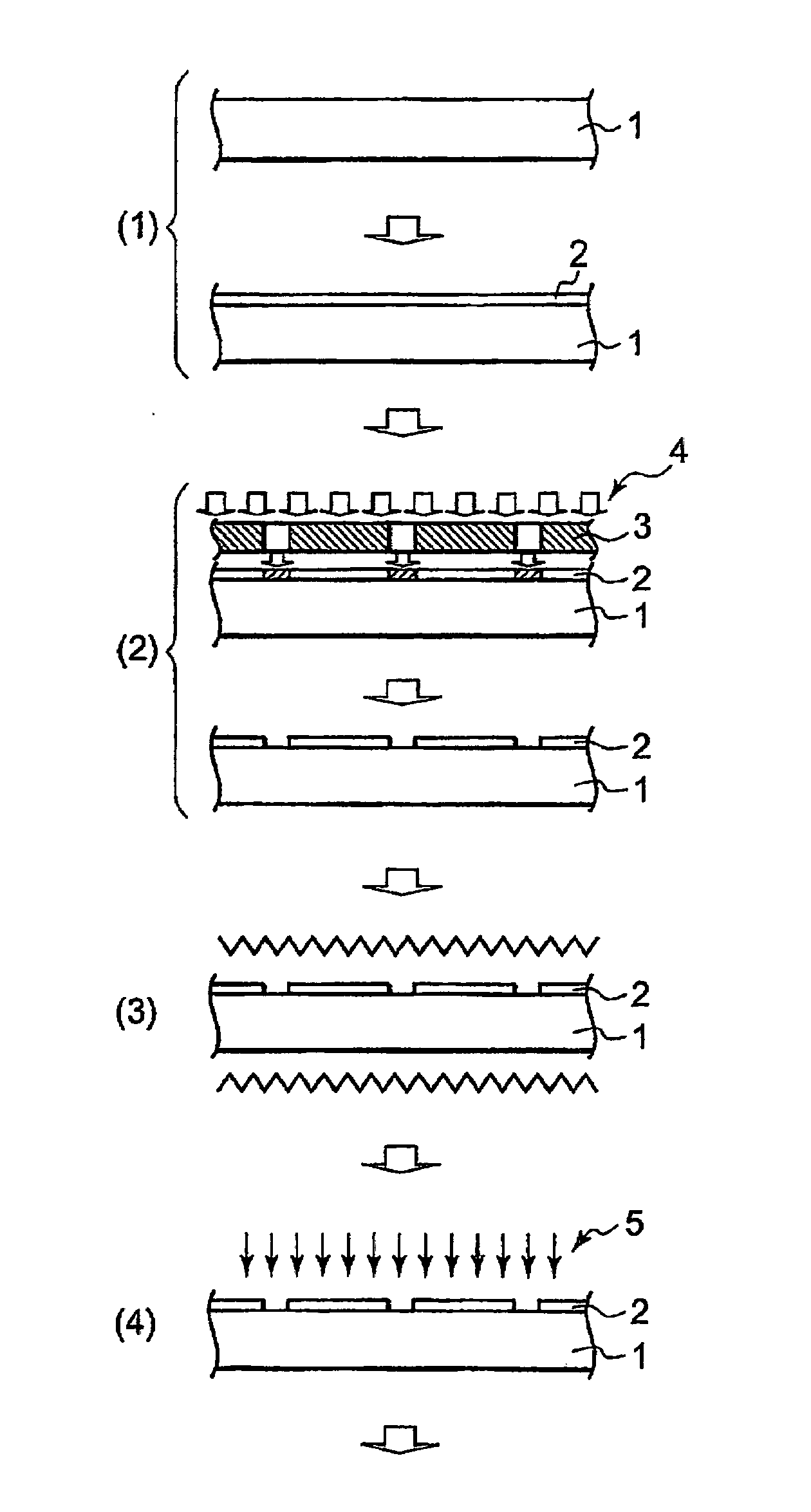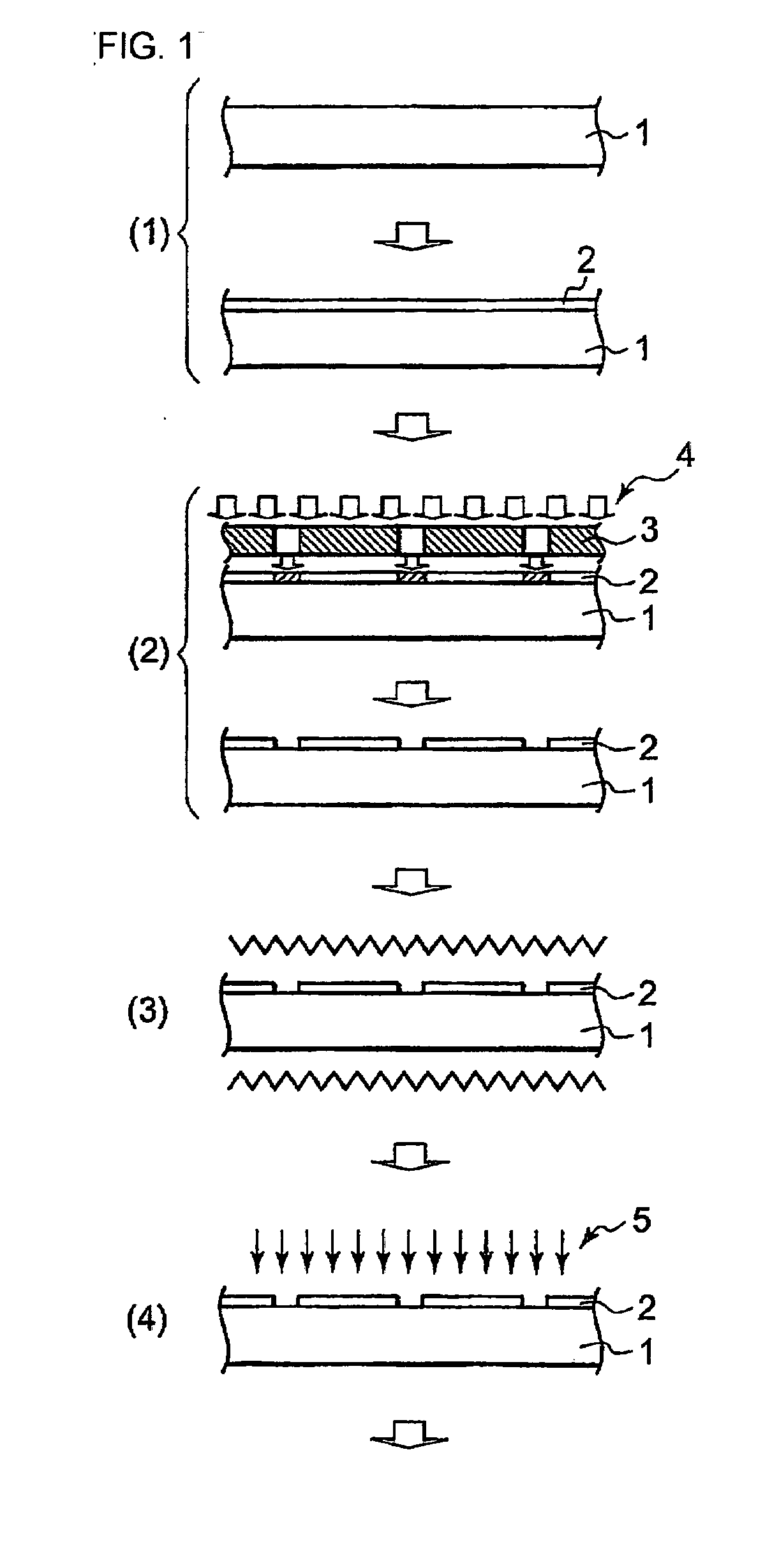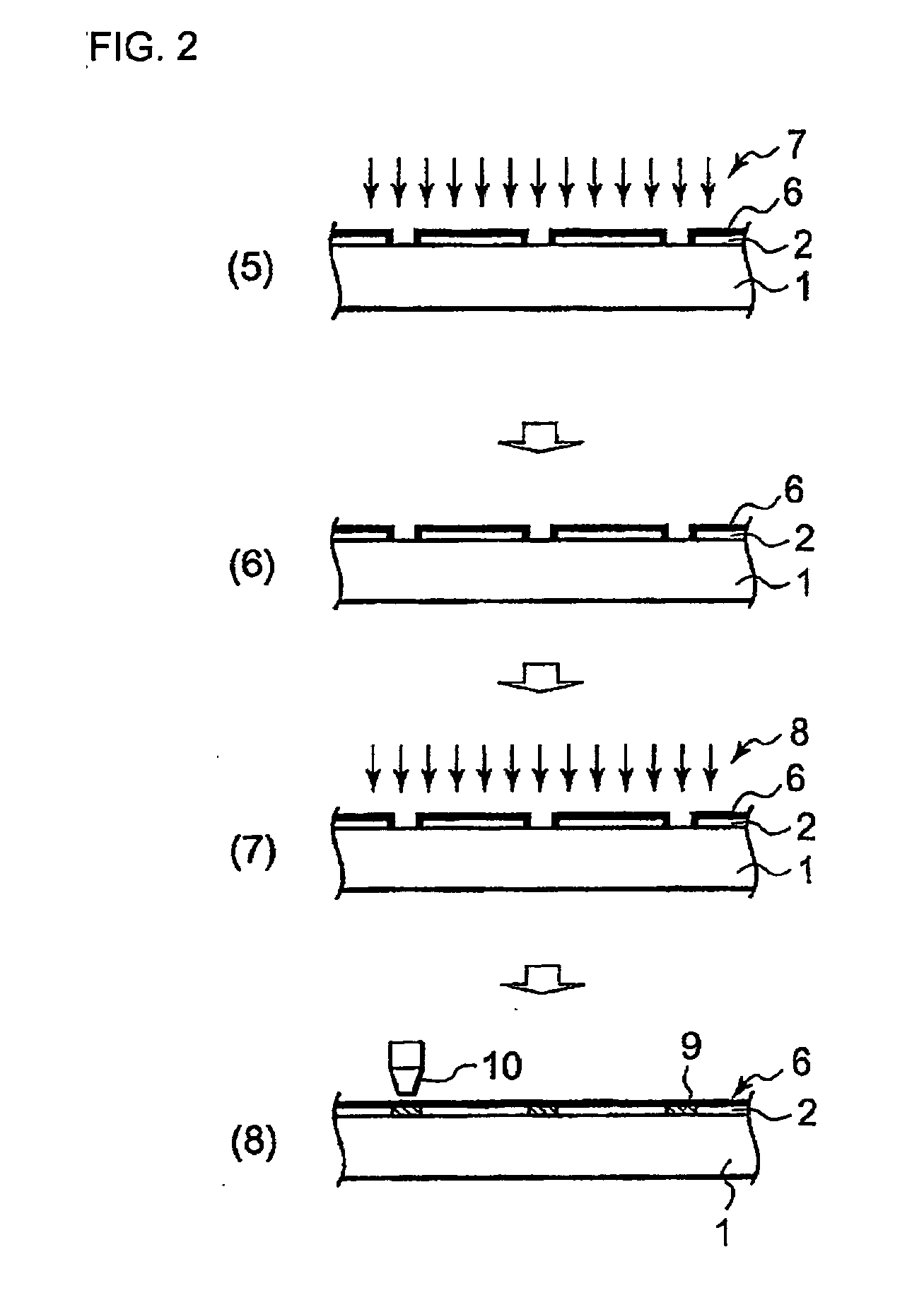Circuit Board, Method Of Manufacturing Circuit Board, And Display Device Having Circuit Board
a manufacturing method and circuit board technology, applied in the field of circuit board, can solve the problems of increasing the manufacturing cost of the electronic device board, unable to obtain the required wiring width, and extremely low utilization efficiency of wiring materials, and achieve the effect of fine wiring formation and sufficient contras
- Summary
- Abstract
- Description
- Claims
- Application Information
AI Technical Summary
Benefits of technology
Problems solved by technology
Method used
Image
Examples
examples
[0128] Hereinbelow, examples of this invention will be described. This invention is not limited to the following examples. Analysis values in the following examples and comparative examples are each derived by rounding to the nearest whole number and “parts” represents “weight parts”.
[0129] The analysis conditions in the following examples and comparative examples are as follows.
[0130] (Test 1) Thermal Desorption Spectroscopy (Hereinafter Abbreviated as “TDS Analysis”) [0131] Apparatus: EMD-WA1000S / W manufactured by Denshi Kagaku Co., Ltd.
[0132] (Test 2) Fourier Transform Infrared Spectroscopy (Hereinafter Abbreviated as “FT-IR Analysis”) [0133] Apparatus: Spectrum One manufactured by Perkin Elmer Corporation
[0134] (Test 3) Cavity Ring-Down Spectroscopy (Hereinafter Abbreviated as “CRDS Analysis”) [0135] Apparatus: MTO-1000H2O manufactured by Tiger Optics, Inc.
(Test 4) Contact Angle Measurement [0136] Apparatus: CA-D manufactured by Kyowa Interface Science
[0137] Using tetrade...
manufacturing example 1
[0143] [Adjustment of Thermosetting Photosensitive Resin Composition (Positive-Type)]
[0144] 62.5 parts of 8-hydroxycarbonyltetracyclo[4.4.0.12,5.17,10]
[0145] dodeca-3-ene, 37.5 parts of N-phenyl-(5-norbornene-2,3-dicarboximide), 1.3 parts of 1-hexene, 0.05 parts of 1,3-dimethylimidazolidine-2-iliden(tricyclohexylphosphine)benzylideneruthenium dichloride, and 400 parts of tetrahydrofuran were put in a pressure-proof reactor made of a nitrogen-substituted glass and reacted at 70° C. for 2 hours while being stirred, thereby obtaining a polymer solution A (solid concentration about 20%).
[0146] Part of the polymer solution A was moved into an autoclave with a stirrer and reacted, with hydrogen dissolved, at 150° C. and a pressure of 4 MPa for 5 hours, thereby obtaining a polymer solution B (solid concentration: about 20%) containing a hydrogenated polymer (hydrogenation ratio 100%).
[0147] A heat-proof container containing 100 parts of the polymer solution B with 1 part of activated car...
manufacturing example 2
[0149] [Adjustment of Thermosetting Photosensitive Resin Composition (Negative-Type)]
[0150] 300.0 parts of methyltrimethoxysilane, 47.5 parts of ion-exchanged water having an electrical conductivity of 8×10−5 S·cm−1, and 0.1 parts of oxalic acid were put into a container with a stirrer and, then, methyltrimethoxysilane was hydrolyzed by heating and stirring under the conditions of 60° C. and 6 hours. Then, after adding 1,000 parts of propyleneglycolmonomethylether into the container, the ion-exchanged water and methanol secondarily produced by the hydrolysis were removed by the use of an evaporator, thereby obtaining a solution in which the solid content was adjusted to 25 wt %.
[0151] 400 parts of the foregoing solution and 2.0 parts of phenyl, 4-(2′-hydroxy-1′-tetradecaoxy)phenyliodonium-p-toluenesulfonate serving as a radiation-sensitive acid forming agent were uniformly mixed and dissolved, and then filtered through a membrane filter having a pore size of 0.2 μm, thereby obtaini...
PUM
| Property | Measurement | Unit |
|---|---|---|
| width | aaaaa | aaaaa |
| wavelength | aaaaa | aaaaa |
| temperature | aaaaa | aaaaa |
Abstract
Description
Claims
Application Information
 Login to View More
Login to View More - R&D
- Intellectual Property
- Life Sciences
- Materials
- Tech Scout
- Unparalleled Data Quality
- Higher Quality Content
- 60% Fewer Hallucinations
Browse by: Latest US Patents, China's latest patents, Technical Efficacy Thesaurus, Application Domain, Technology Topic, Popular Technical Reports.
© 2025 PatSnap. All rights reserved.Legal|Privacy policy|Modern Slavery Act Transparency Statement|Sitemap|About US| Contact US: help@patsnap.com



